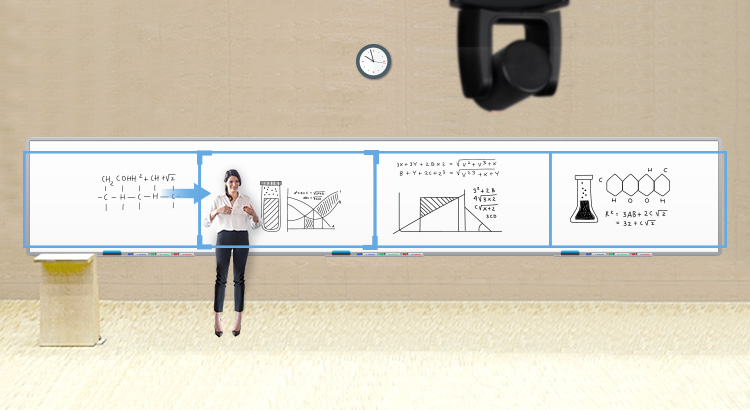It’s not too hard to engage students in science class. There’s always a mind-blowing experiment to perform, a fetal pig to dissect, and seemingly endless streams of interesting nature content on the internet to play. But there are still issues with maximizing such content.
For instance, small details in some object lessons require students to crowd around, leaving the less-aggressive ones on the outside to cut up and cause distractions. And when you're working in a hybrid classroom, how can you ensure remote learners have access to such details?
Applying tech like visualizers and Pro AV cameras to teaching science class solves these issues and creates unlimited opportunities for maximum engagement.
Teaching Science With Visualizers

Next time you want to grab your students’ attention with incredible details, keep them in their seats—at least until they jump out of them in amazement—with a visualizer (also commonly known as a document camera).
A premium visualizer will have a super-powerful zoom that scoops up tiny details, magnifies them, and streams them on the class display or remote student devices in vibrant 4K quality. Visualizers are also excellent for showing step-by-step experiments, close-ups of class pets, and more with their overhead camera angles.
Teachers also benefit from visualizers with image and video capturing capability. Experiments and class projects can live second lives on YouTube or make appearances in other classes. Also, you should choose a visualizer that syncs to the cloud so teachers can quickly and easily organize their science content.
Teaching Science With Pro AV Cameras

Another great device that will help you deliver exciting science classes is an AI Auto Tracking PTZ Camera. Using AI technology, these Pro AV cameras follow teachers all around the classroom, giving distance learners a front row seat to all the action.
Without auto tracking, distance learning teachers are stuck within the camera’s FOV. With auto tracking, they’re free to use the entire room, which is extremely important for science class. Top-notch devices feature multiple tracking modes that meet the needs of different types of large-scale experiments.
For example, a physics teacher could assign a Rube Goldberg machine project. Students can build contraptions that carry toy cars or marbles along a series of contraptions operated by pulleys, levers, and so on. With an AI Auto Tracking Camera set to zone mode, the teacher can set up the contraptions around the room, testing them one at a time without having to stop and adjust the camera’s pan, tilt, and zoom. The class could then collaborate on one large contraption that takes up the entire room. After setting the camera to presenter mode, the teacher can follow the object in motion, allowing the camera to track its path.
Visualizers and AI Auto Tracking PTZ Cameras are perfect for inspiring the next generation of scientists. Find all the devices you need to set up your tech-forward science classroom by clicking the button below!